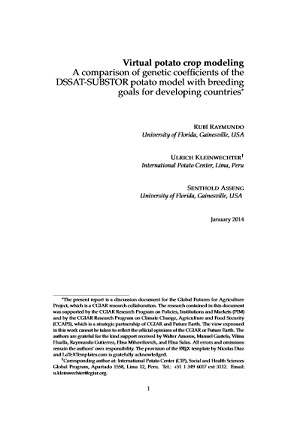Virtual crop modeling is the representation of future genetic improvements from plant breeding in crop growth simulation models through changes in genetic coefficients or other crop model parameters with the objective of analyzing ex-ante the impacts of improved traits on crop yields and assisting breeders in their breeding efforts.
As a first step towards virtual crop modeling for the potato crop, the present report provides a comparison of priority breeding targets for developing country regions with genetic coefficients and other parameters of the SUBSTOR-potato model, thereby showing the potential uses of the model for that purpose.
It is shown that SUBSTOR provides scope for virtual crop modeling. Out of nine priority target traits, five can currently be dealt with in model. Adaptation to long day conditions and heat tolerance can directly be represented by adjusting the genetic coefficients of the model. High yields and drought tolerance would require changes in parameters that are currently included in the model code. Earliness would require the implementation of a new parameter in the code. Additional traits related to crop quality and resistance to biotic stress factors will require more profound changes in either the model structure or the coupling of the crop growth model with disease models.

